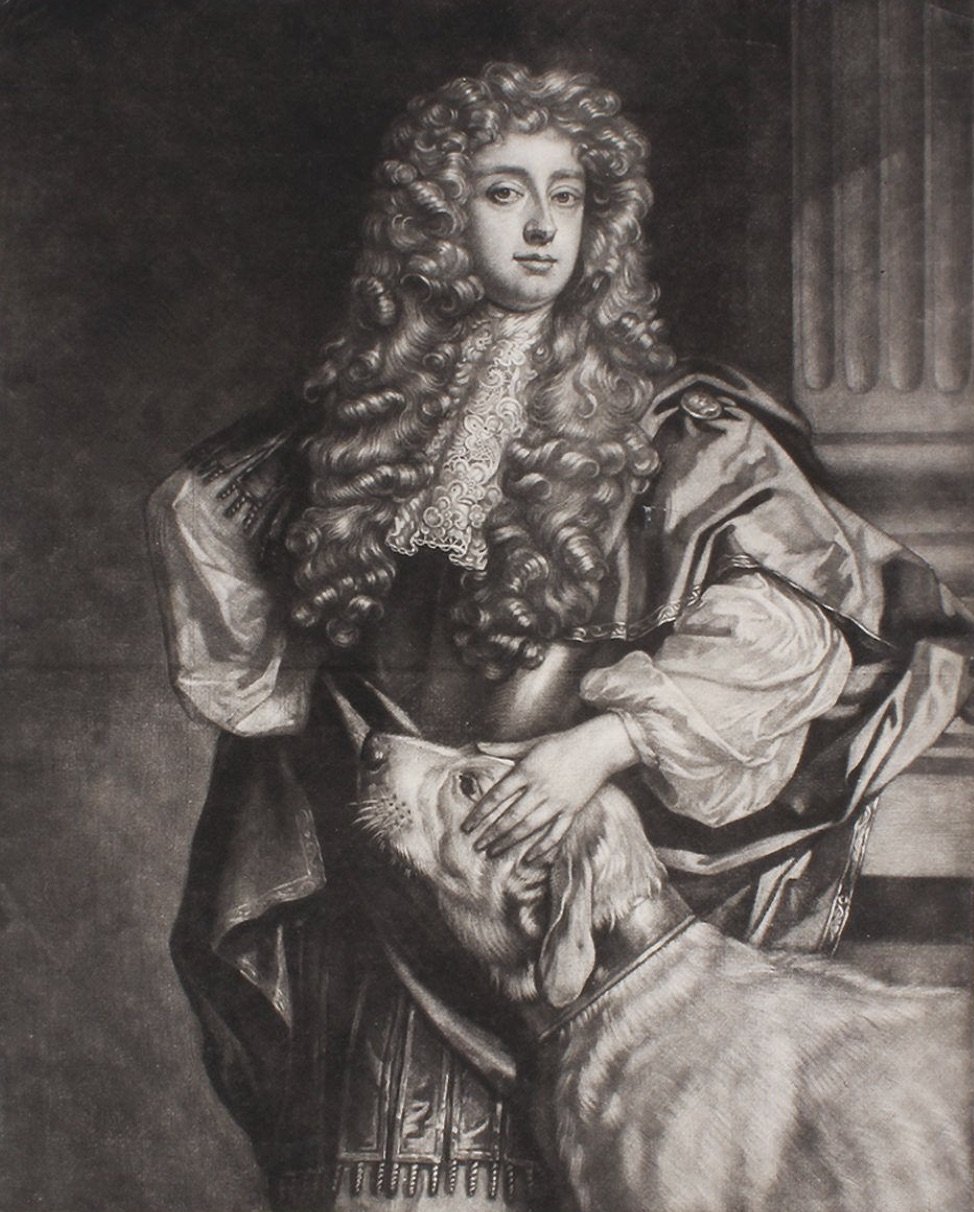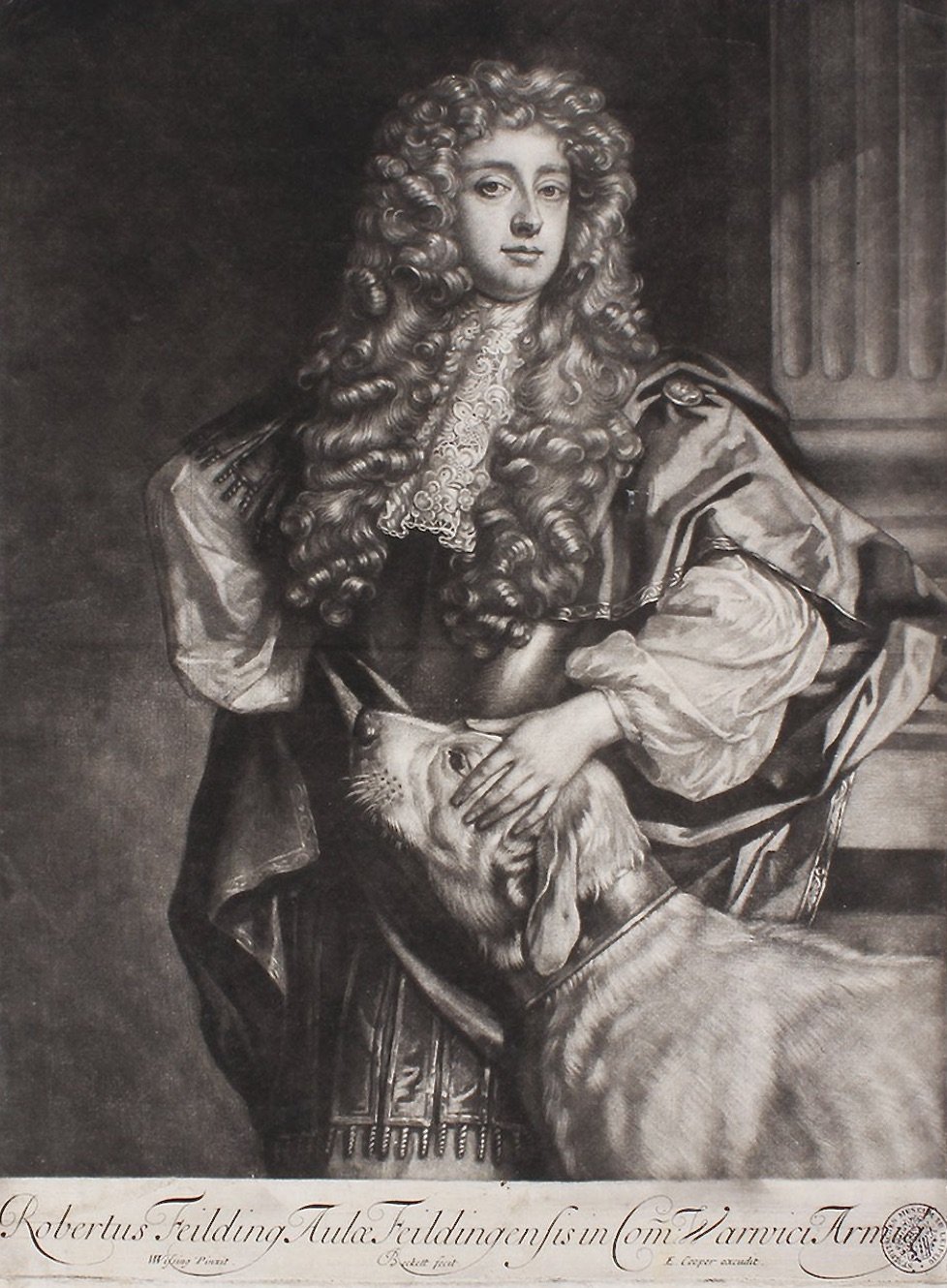
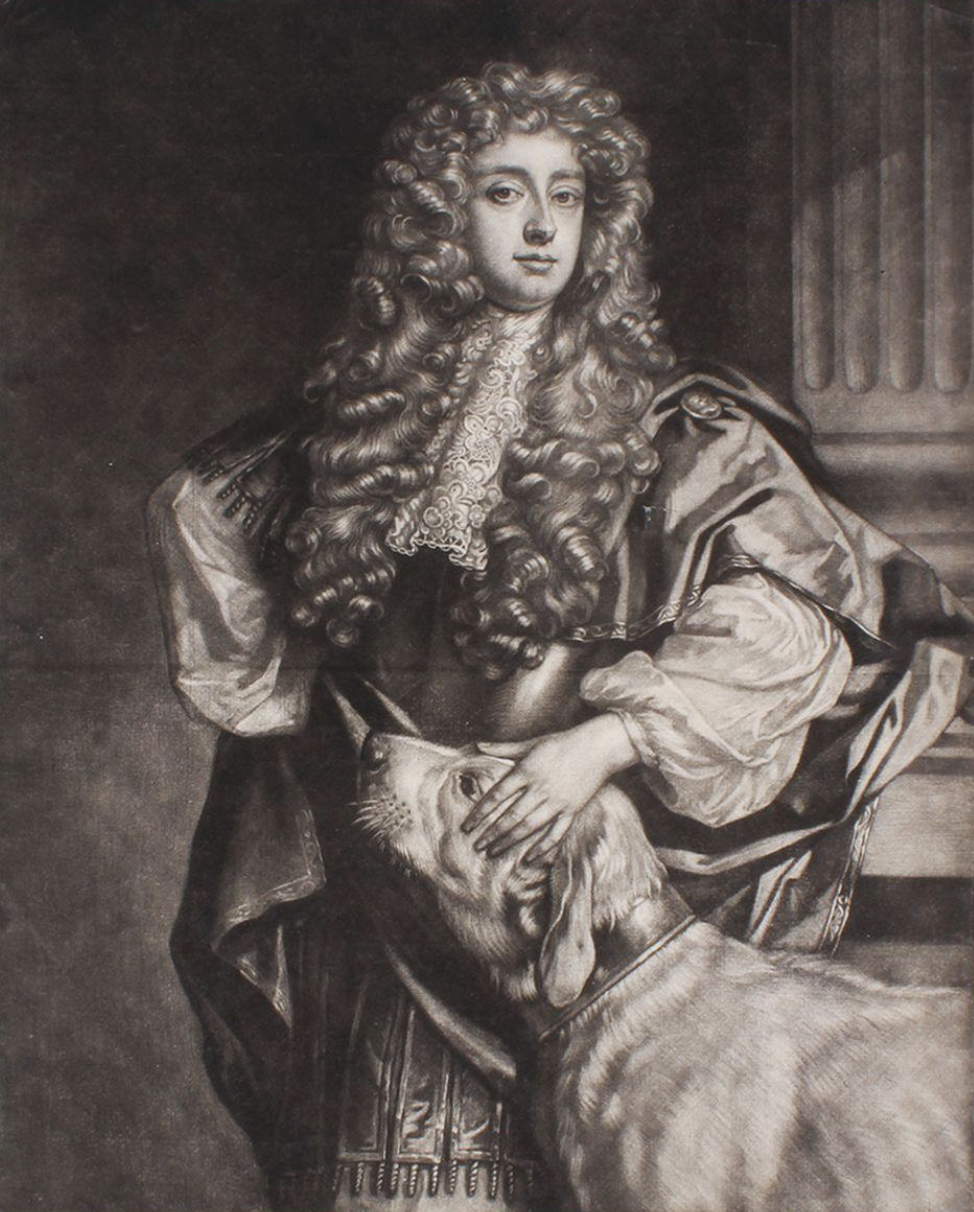
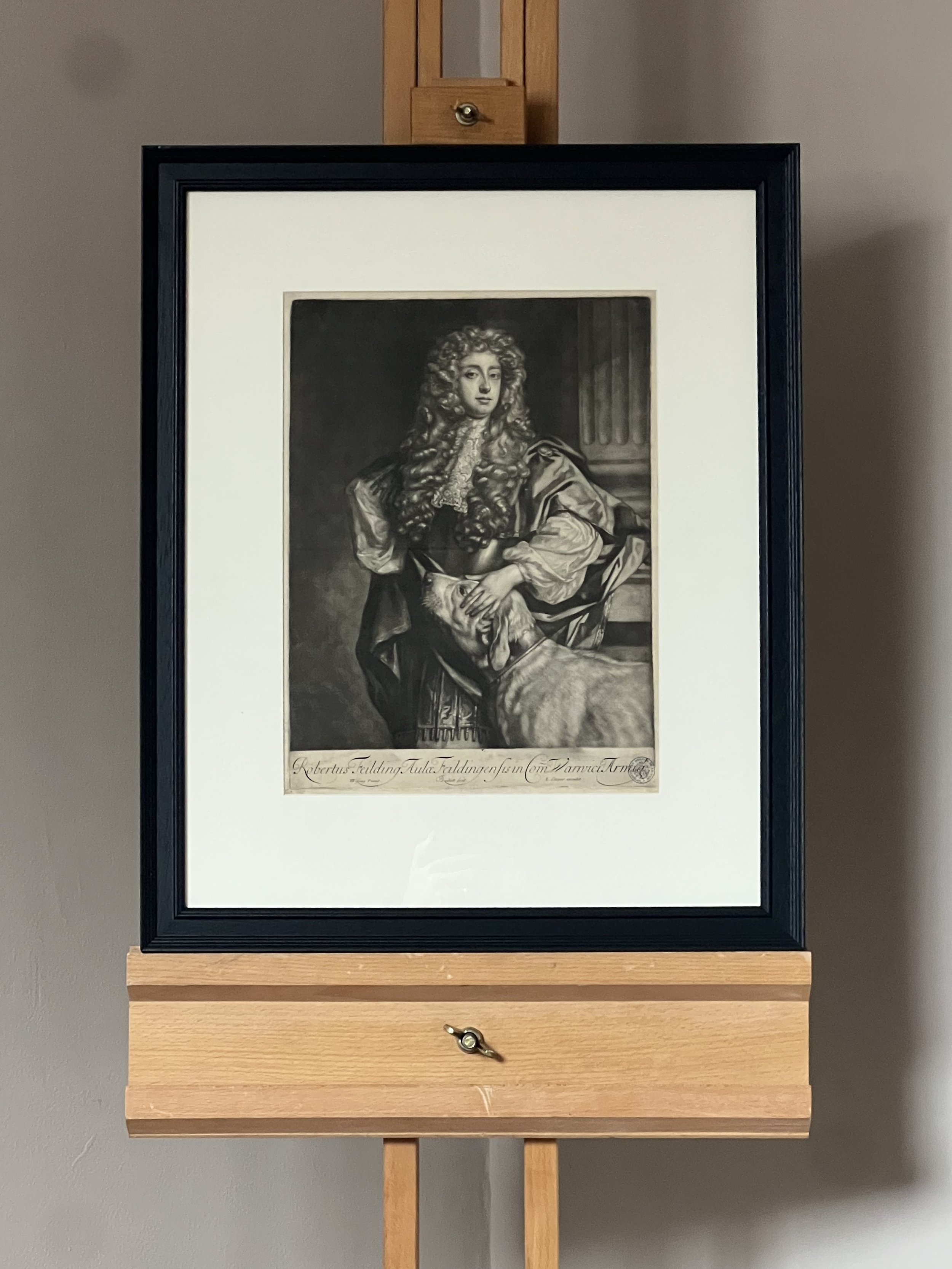
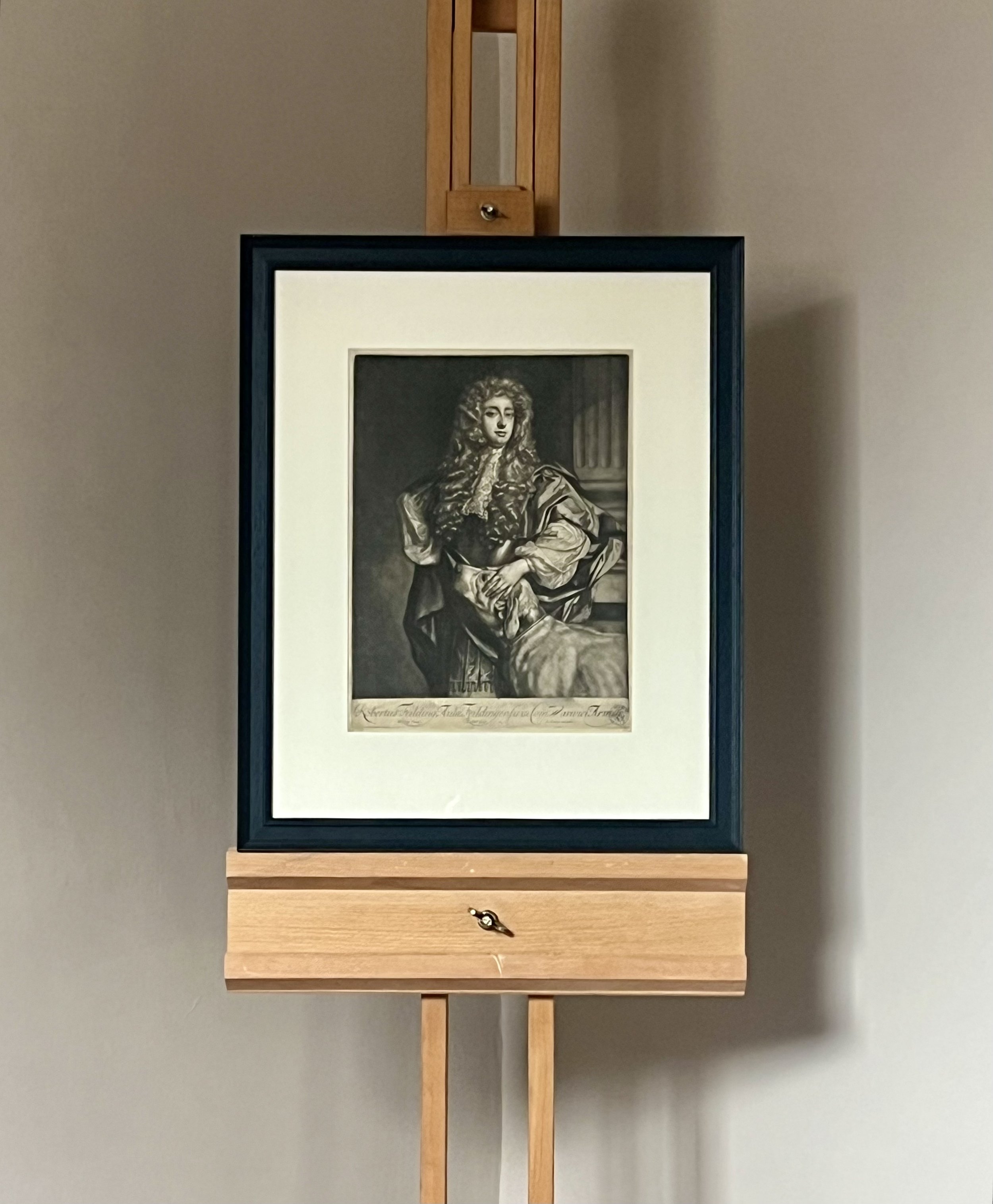
ROBERT FEILDING, ALSO CALLED ‘BEAU’ FEILDING - BY ISAAC BECKETT AFTER WILLIAM WISSING.
The mezzotint (a tonal method of printmaking) was invented in Germany in 1642 and introduced to Britain by Dutch engravers. Isaac Beckett was the first great native-born Englishman to practice the technique, producing just over than a hundred prints between 1681 and his early death. Most of these works are portraits, many after leading painters.
This example represents Robert "Beau" Fielding and his hound. Fielding gained his nickname by spending huge amounts on his wardrobe, and gained a reputation as a gambler, bully and n'er-do-well.
Fielding was a notorious character of the Caroline era, a 'reprobate, gambler and bully', in the words of DNB. He came from the Warwickshire gentry, and made his mark at Court through the immense expense of his wardrobe; hence his soubriquet Handsome or Beau Feilding. He ran through the fortune of his wife, and turned Catholic to ingratiate himself with James II. In 1705 he was at the centre of a celebrated scandal, when he married two women in the same month, one for her fortune (though in this he was tricked) and the other (the Duchess of Cleveland, the former mistress of Charles II) for her title. When the truth emerged, the Duchess prosecuted him for bigamy, and he only escaped thanks to a royal pardon.
In 1705, after marrying two women in the same month, Fielding only escaped prison through a royal pardon.
Mezzotint etching with centerfold as issued: 1681-1688.
Plate: 13 3/8 x 9 ¾” Sheet: 13 ¾ x 10 ¼” Framed: 22 x 18”
SOLD

